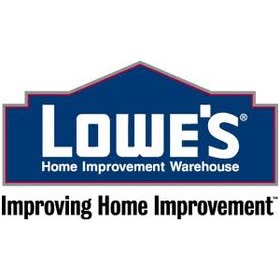Dividend Value Builder Newsletter
- Discover, Compare, and Evaluate Stocks Without Emotional Bias -
(Intrinsic Value Analysis For Over 300 Stocks)
Lowe’s Companies (LOW) Stock Analysis

Lowe’s Dividend
Lowe’s (LOW) has paid a dividend every year since 1961 and has increased it for 63 consecutive years, qualifying the company as a Dividend King, Dividend Aristocrat, and Dividend Champion.
Current Dividend Annualized: $4.80
Why You Might Want to Own the Company:
In addition to 63 consecutive years of dividend increases, Lowe’s engages in strategic share buybacks, enhancing shareholder value. With a solid financial foundation and a focus on both DIY and professional customers, Lowe’s is well-positioned to benefit from long-term trends in home improvement and housing. For investors seeking a stable, income-generating company with growth potential, Lowe’s presents a compelling option.
Is the stock price a Buy, Sell, or Hold?
Lowe’s Companies (LOW) Stock Intrinsic Value – Margin of Safety Analysis
(updated June 2025)
Normalized Diluted Earnings Per Share (TTM): $12.09
Free Cash Flow Per Share (TTM): $11.83
Cash Flow From Operations (CFO) Per Share (TTM): $15.49
Estimated Intrinsic Value: $245
Target Buy Price Based on Required Margin of Safety = $204
(Required Margin of Safety Based On Risk Stability
Grade:
A = 0%, B = 20%, C = 40%, D = 60%, F = 80%)
Target SELL Price Based on Estimated Intrinsic Value = $306
(Allow Overvaluation Adjusted by Risk Stability Grade:
A = 40%, B = 25%, C = 15%, D = 5%, F = 0%)
Risk / Stability Grade: B
A grade indicates a quality company with a strong balance sheet, high earnings quality, and a positive business environment. These stocks require the slimmest margin of safety within the stock universe.
B grade indicates a company with a good balance sheet, good earning quality, and a stable business environment. The margin of safety required should be greater than stocks with an A grade but less than the average stock.
C grade indicates a company with a sufficient balance sheet, at least average earnings quality, and a reasonably stable business environment. The margin of safety required is greater than A & B stocks, but less than D & F stocks.
D grade indicates a company in good standing but has issues that could affect its stability and long term risks. D rated stocks should require a large margin of safety when purchased.
F grade indicates a company with significant issues that are currently affecting its stability and long term risks. Require an extremely large margin of safety for F rated stocks when purchased.
Financial Risk Grade: B-
A grade indicates an extremely low probability of a dividend cut. This rating is reserved for companies with strong balance sheets and/or excellent dividend histories.
B grade indicates a very low probability for a dividend cut.
C grade indicates a low probability for a dividend cut and/or average safety risk.
D grade indicates there are issues that should be considered concerning future dividend payments.
F grade indicates serious dividend safety risks. Investors should complete comprehensive due diligence before investing.
Business Quality Grade: A
A grade indicates earnings quality is high or far above average.
B grade indicates earnings quality is good and/or above average.
C grade indicates earnings quality is acceptable or average.
D grade indicates earnings quality is poor and requires thoughtful due diligence.
F grade indicates the quality of the earnings is poor or far below average requiring serious due diligence.
Earnings Report: 4/30/25
AAAMP Portfolios Position Disclosures:
Treasure Trove Dividend (TTD) – None
Global Dividend Value (GDV) – None
Dividend Growth & Income (DGI) – None
Global Value (GV) – None
Global Value Aggressive (GVA) – None
Global Conservative Income (GCI) – None
Global High Income (GHI) – None
Company Description
Sector: Consumer Cyclical
Industry: Home Improvement Stores
Company Overview:
Lowe’s (LOW) is a leading home improvement retailer in North America, offering a wide range of products for DIY customers, professional contractors, and commercial businesses. The company operates thousands of stores across the U.S. and Canada, selling appliances, building materials, tools, and home décor. Lowe’s competes primarily with Home Depot in the home improvement sector and has been expanding its digital and omnichannel capabilities.
Company Strengths:
Lowe’s benefits from strong brand recognition, a vast store network, and a loyal customer base. The company has successfully grown its e-commerce platform, enhancing its ability to serve both DIY and professional customers. Its focus on operational efficiency and cost control has driven profitability, while consistent dividend payments and share buybacks make it attractive to investors.
Company Challenges:
Lowe’s faces challenges from a cooling housing market and economic uncertainties that may impact consumer spending on big-ticket home improvement projects. Competition with Home Depot remains intense, particularly in serving professional contractors, an area where Lowe’s has historically lagged. Additionally, supply chain disruptions and rising costs for materials and labor can pressure margins and operational efficiency.
Dividend Value Builder Newsletter Membership (24 Issues) - $129/Yr.
Minimize Large Portfolio Drawdowns
Invest With Confidence In Less Time - Manage Your Portfolio Without Behavioral Errors
Disclaimer:
While Arbor Investment Planner has used reasonable efforts to obtain information from reliable sources, we make no representations or warranties as to the accuracy, reliability, or completeness of third-party information presented herein. The sole purpose of this analysis is information. Nothing presented herein is, or is intended to constitute investment advice. Consult your financial advisor before making investment decisions.
